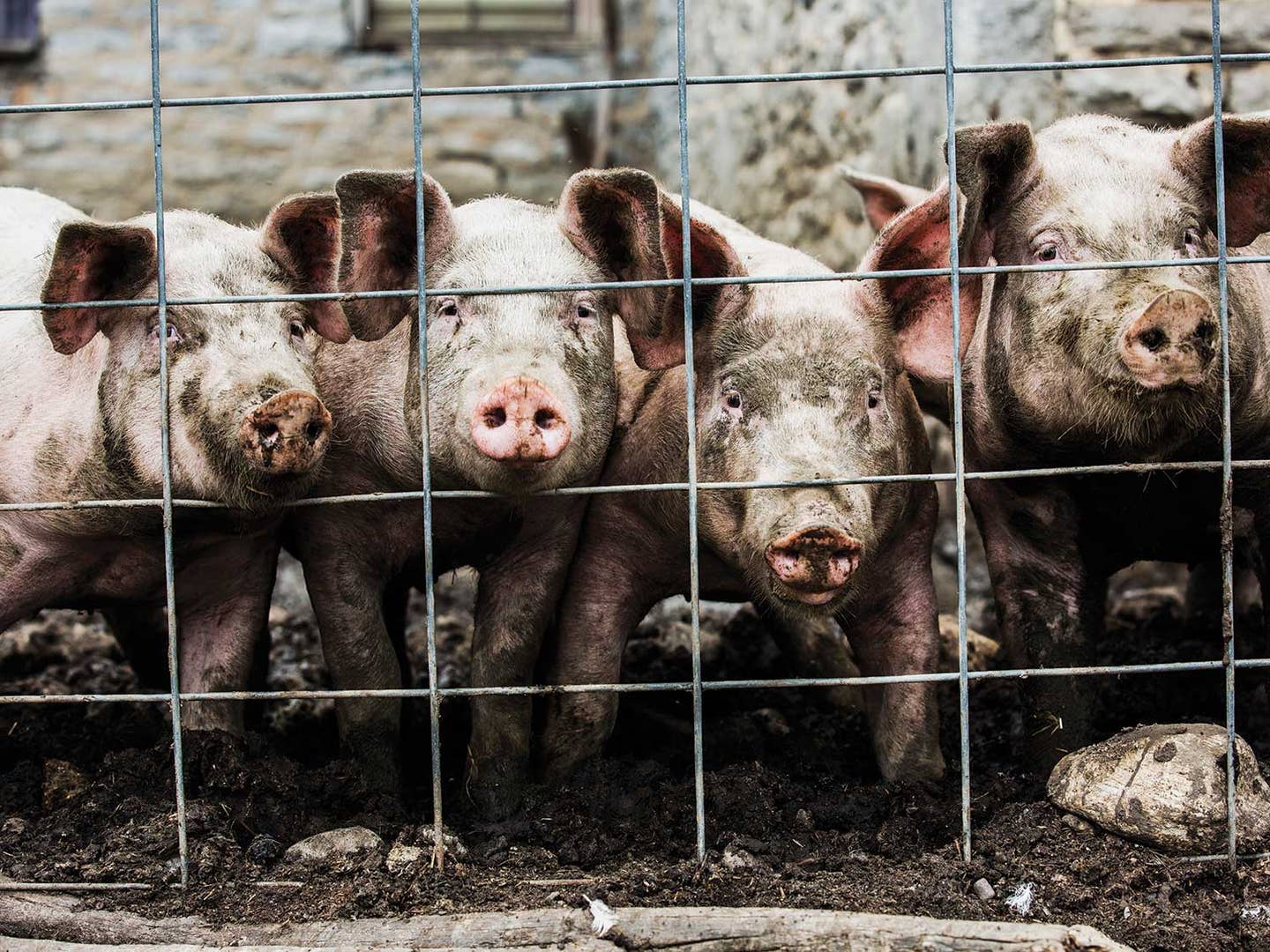
A Visit with a Pig Farmer on Lard-Rendering Day
In upstate New York, Jennifer Romer supplies her town with well-raised pork fat for baking and frying
“I was never allowed to have pigs growing up,” said Jennifer Romer of Slate Creek Farm in northern New York, as she slid ground pork fat into her oven to render. “My dad didn’t like them, so he always said no.” Romer grew up on a second-generation farm in sunny Central California. Now a homesteader who owns a vintage Sunbeam deep fryer and collects wire bail Ball canning jars, Romer also breeds Yorkshire, Duroc, and Hampshire pigs on sunflower-filled pastures above the Steuben Valley. It’s a harsh region north of Utica, home to a strong “waste nothing” hardscrabble ethic.
Romer adjusted the oven temperature to 225°F and stirred the pan with a wooden spoon. “This is three pigs’ worth of leaf lard,” she said. “I’m breaking it apart to move it along faster. If I don’t pay attention, it can burn.” Rendering takes all day when Romer is processing a large batch of fat from belly, shoulder, and back portions. Her leaf lard is prized by a select few customers who hear about it only by chance—she doesn’t advertise. I spotted an unclaimed jar on her table at a weekly farmers market where she sells her pork, and begged to join the lard list.
In an American food culture that is ever-so-slowly relearning to love olive oil and butter after decades of demonizing fat, appreciating lard feels like a kind of final frontier. But it never really went away. It cuts across so many baking cultures because of its essential qualities: large fat crystals and a high melting point. The highest grade—which Romer was making that day—is leaf. Taken from visceral fat deposits surrounding the kidneys, it has a delicate flavor and a creamy consistency suited for pastry. The porkier-tasting fat from other parts of the pig also has appeal, of course, used as savory drippings on traditional "lardy" breads; Germans call it Schweineschmalz and smear it on rye bread. The British love a teacake known as "Lardy Johns." In Japan, fatback lard is essential for tonkotsuramen. Italians achieve charcuterie nirvana with lardo di Colonatta, garlic-and-rosemary-infused fatback aged for six months in tubs of white marble from the Apuan Alps.
Outside, Romer filled a bucket with scraps, then took me to the pens, where we were greeted enthusiastically by a litter of 40 piglets. They tore off running around the old stone barn, scattering her geese. “The hooligans,” she said, happily rubbing the back of a sweet-natured sow named Cookie. “She has excellent babies.”
Romer feeds her herd a mix of corn and soybeans, topped with black sunflower oil. For an occasional treat, she picks up expired produce at supermarkets or leftovers from the local zoo.
Back in the kitchen, Romer patiently drained the melted pork fat into a saucepan and brought it to a slow boil to remove excess moisture, then strained the golden liquid through layered cheesecloth into warm canning jars. “One gentleman uses it for refried beans,” she said. “Another lady is doing the Whole30 diet and makes liver pâté. Some customers use it in place of butter for baking cookies. I use the regular lard for fried chicken—the best you’ve ever had.” Six pounds of fat resulted in four quarts of leaf lard. A few hours later, it had solidified, becoming a silky, white prize for one customer who wanted to make biscuits the next morning.
Keep Reading
Continue to Next Story










